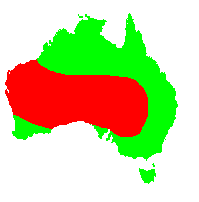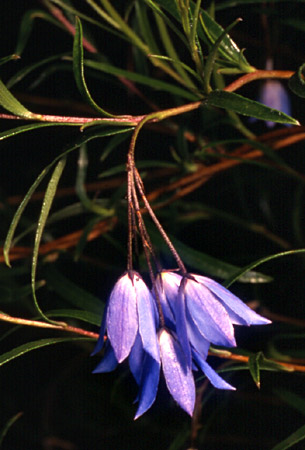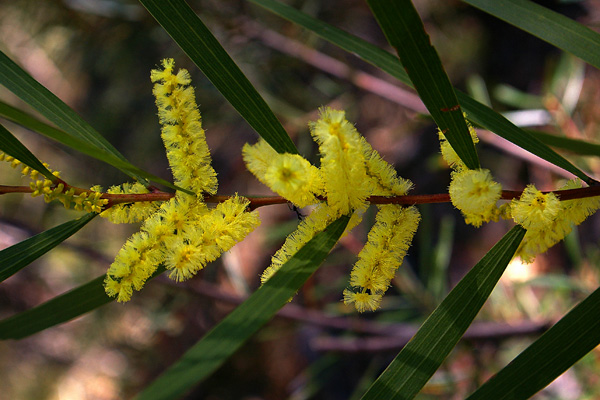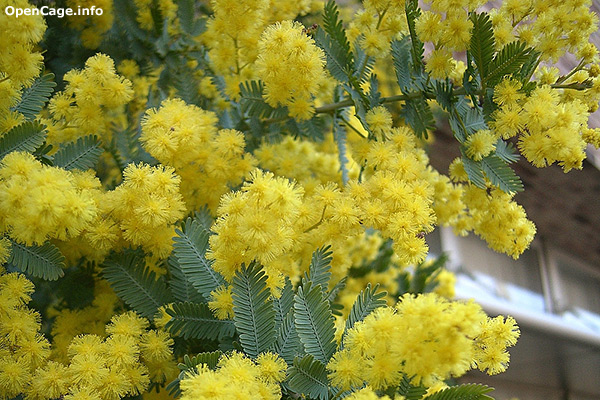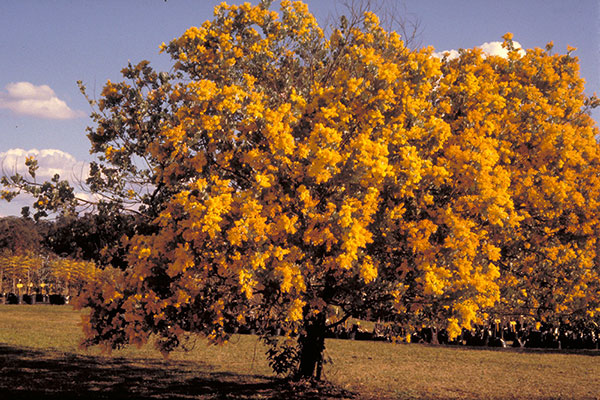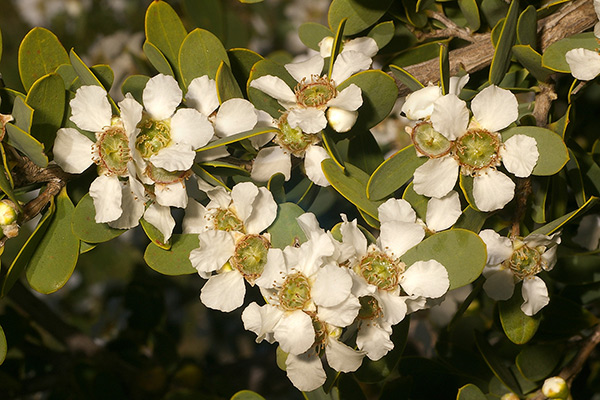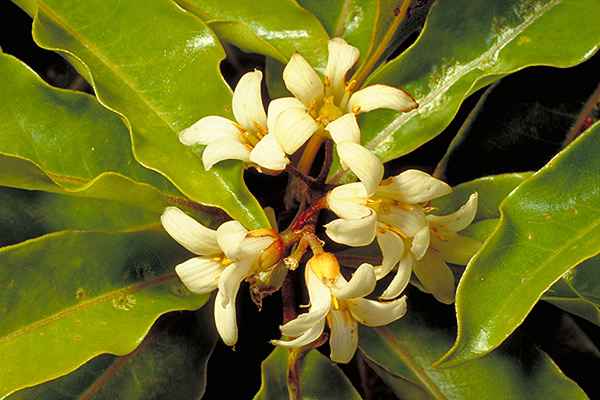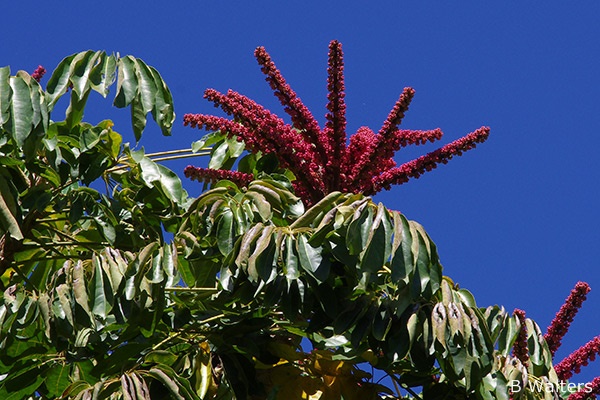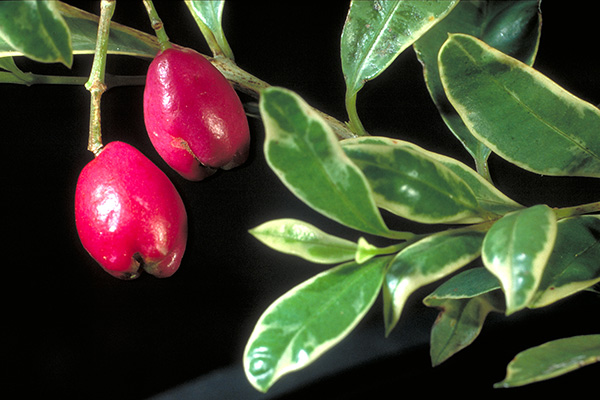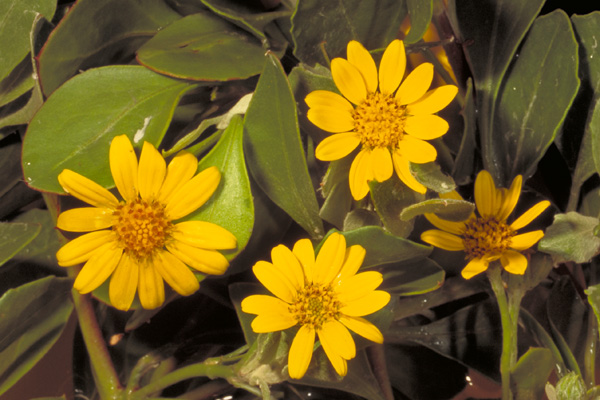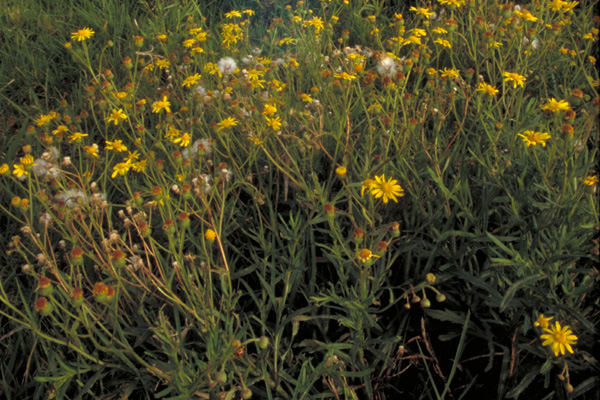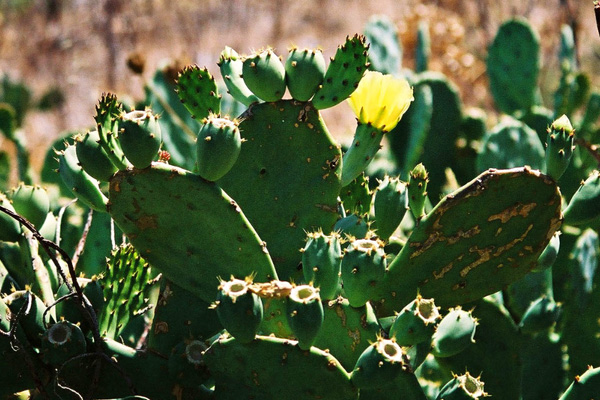General Description:
There are about 100 species in the genus Ptilotus, all but one occurring only in Australia. They are found in a range of habitats from tropical areas to the arid inland. They are usually herbaceous annuals or perennials with flowers in dense, brightly-coloured conical heads. They are sometimes called “pussy tails’ because of the appearance of the flower spikes.
Ptilotus exaltatus is one of the best known members of the genus and it occurs widely in drier areas. The species was for a time subsumed into Ptilotus nobilis but has now been restored as a separate species. P.exaltatus is a stiff, herbaceous plant with egg-shaped to oblong leaves up 40 125 mm long. Flowers occur in conical shaped spikes on tall stems. The flowers are pink to purple in colour and the spikes can be up to 150 mm long by 50 mm diameter. Flowering occurs from winter through to summer.
This species has been in cultivation for many years but, along with other members of the genus, it has not proven to be particularly reliable. Best success has been achieved in dry climates (at least in summer) in open positions with plenty of sun. Soil drainage needs to be excellent. There is considerable research being undertaken into the cultivation requirements of this genus because of their potential as cut flowers.
Propagation is usually carried out from seed which does not require any pretreatment but which may be slow and unreliable in germination. Propagation from cuttings has been successful.
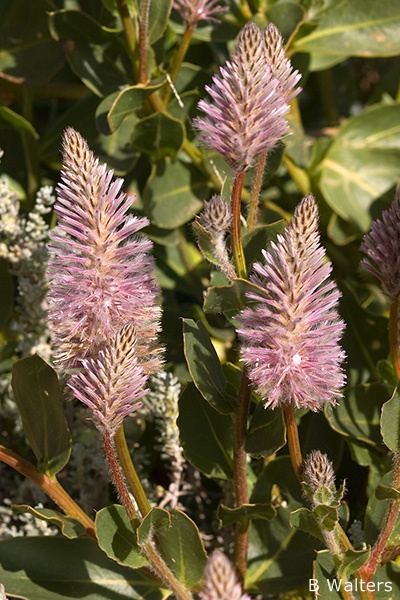
Ptilotus exaltatus
Photo: Brian Walters
 Australian Native Plants Society (Australia)
Australian Native Plants Society (Australia)